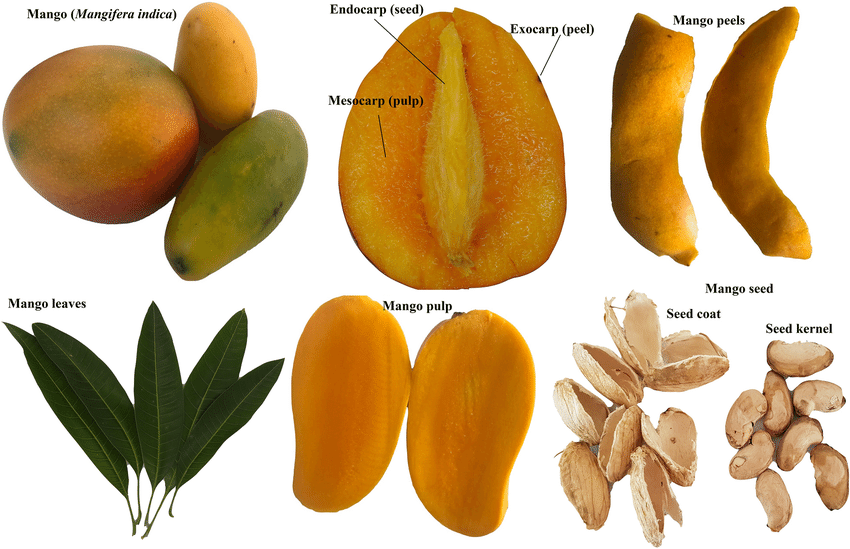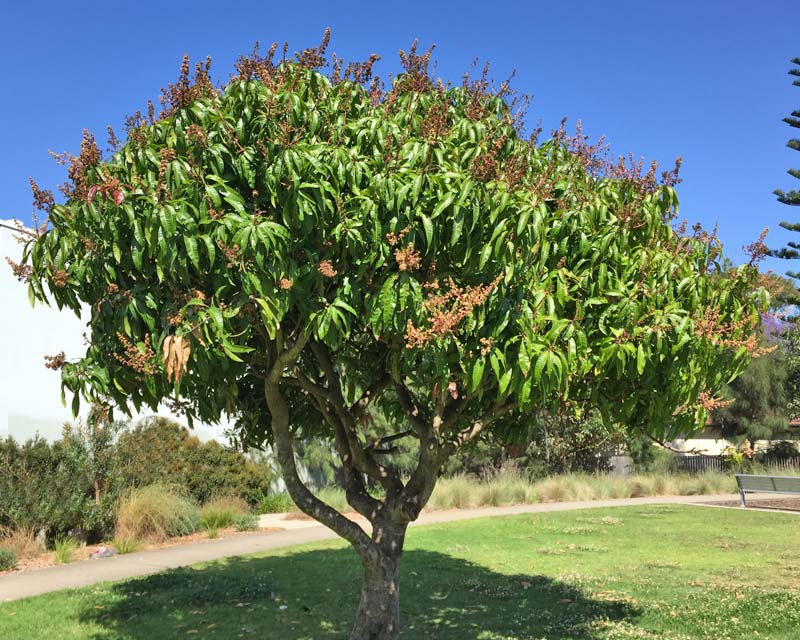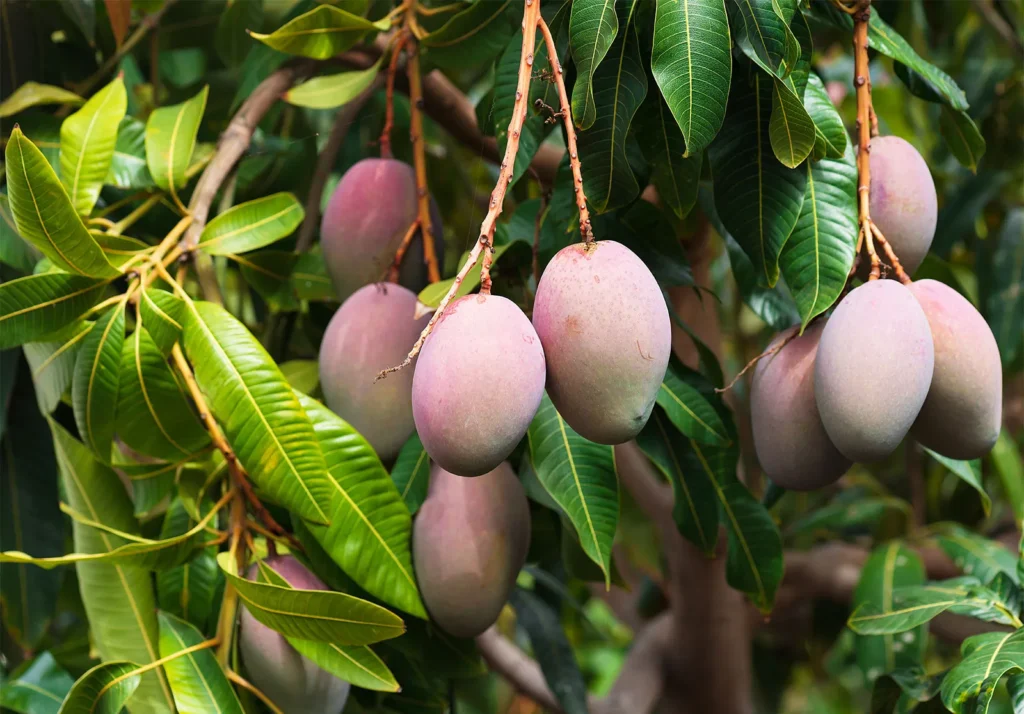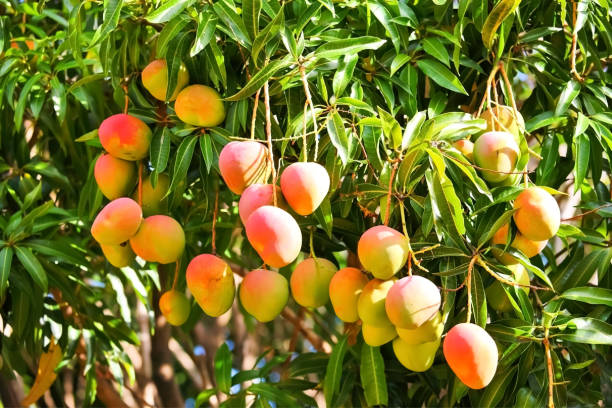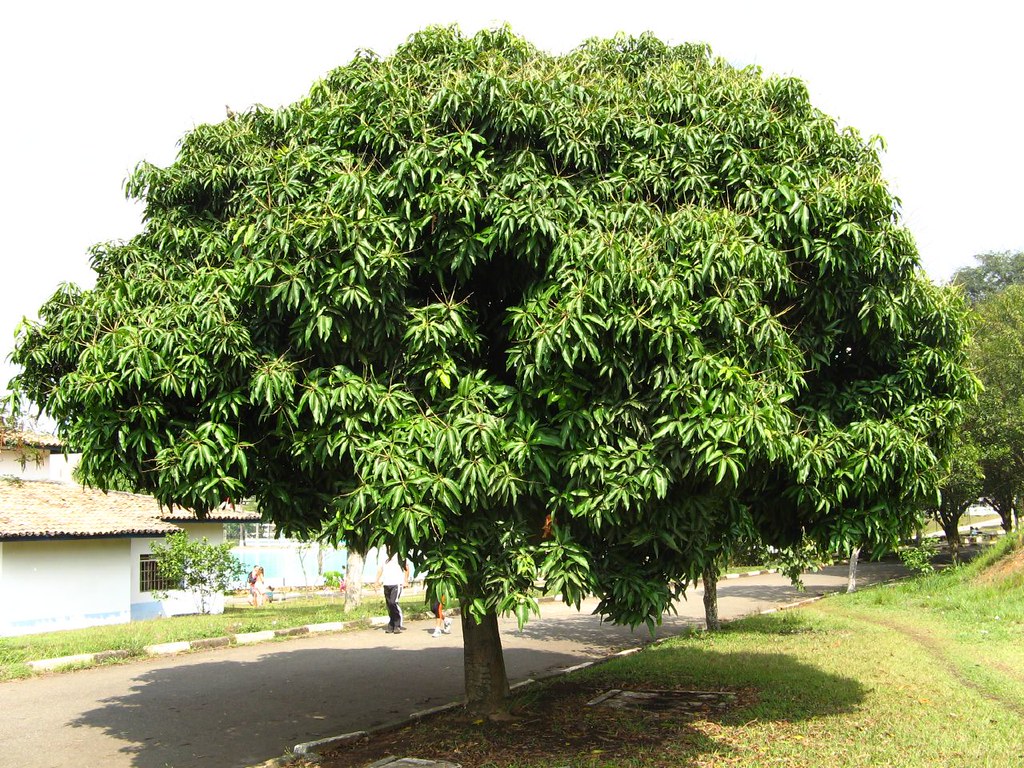Mangifera Indica, commonly known as Mango, is a species of flowering plant in the family Anacardiaceae. It is a large fruit tree, capable to a height of 30 meters (100 feet). It is a large green tree, valued mainly for its fruits, both green and ripe.
It is a large green tree, valued mainly for its fruits, both green and ripe. Approximately 500 varieties have been reported in India. It can grow up to 15–30 metres (50–100 feet) tall with a similar crown width and a trunk circumference of more than 3.7 m (12 ft). The leaves are simple, shiny and dark green.
Red-yellow flowers appear at the end of winter, and also at the beginning of spring. Both male and female flowers are borne on same tree. Climatic conditions have a significant influence on the time of flowering. In South Asia, flowering starts in December in the south, in January in Bihar and Bengal, in February in eastern Uttar Pradesh, and in February–March in northern India. The duration of flowering is 20–25 days for the Dasheri variety, while panicle emergence occurs in early December and flower opening is completed by February. The Neelum variety produces two crops a year in Kanyakumari, Tamil Nadu, but it flowers only once in North Indian conditions.
The mango is an irregular, egg-shaped fruit which is a fleshy drupe. Mangos are typically 8–12 centimetres (3–5 inches) long and greenish yellow in color. The fruits can be round, oval, heart, or kidney shaped. Mango fruits are green when they are unripe. The interior flesh is bright orange and soft with a large, flat pit in the middle.
Mangos are mature in April and May. Raw mangos can be used in the making of pickles and chutneys. Ripe mangos are a popular fruit throughout the world. The skin and pulp account for 85% of the mango’s weight, and the remaining 15% comes from the stone (seed).
Growth Form
A medium to large sized tree with a dense, rounded crown with rather distinctive drooping elliptic to lanceolate leaves. It is still relatively common in parks, open spaces and community gardens in Singapore.
Foliage
The leaves are simple, deep green, up to 30cm long and 7 cm wide, oblong-elliptic to lanceolate in shape, with entire and slightly undulate margins. The midrib is yellow and quite visible, and the leaves also tend to droop downwards slightly. Young flushes are coppery red to bronze in colour.
Flowers
Individual flowers are tiny, yellow to pinkish white, but borne on large, showy panicles with red peduncles, and are considered fragrant. Uneven flowering within the same tree has been reported in some cultivated varieties (or cultivars) of mango including the ‘Sensation’ cultivar (Oosthuyse & Jacobs 1996, Reece et al. 1946, Lin & Chen 1981). It is uncertain why uneven flowering occurs. Oosthuyse & Jacobs (1997) found that flowering can be synchronized in ‘Sensation’ trees by pruning the inflorescences. It is possible that the inflorescence may produce hormones that signal other parts of the tree not to flower. Removing the inflorescence may eliminate the source of inhibitory signals, allowing all parts of the tree to flower. Uneven flowering is a beneficial trait in terms of promoting survival of the mango species and results in flowers being available for a longer period of time thus increasing the likelihood of successful pollination. It also prevents unfavourable weather conditions from destroying the entire crop, because dry weather is required for optimal fruit production.
Fruits
The most famous part of this tree, the fruit is a large drupe, up to 20cm long, ovoid-oblong in shape, with green, yellow or red skin often slightly glaucous. It hangs from the branches on long stalks. The flesh when ripe is yellow, juicy and very fragrant. They are relished by humans and animals, including bats, birds, monkeys etc.
Associated Fauna
Long-tailed Parakeet, Blue-crowned Hanging Parrot, Oriental Pied Hornbill, Black-naped Oriole, Yellow-vented Bulbul are observed to feed on the fruit.
Cultivation
Requires full sun, rich, well-drained soil, and moderate watering. Requires fertilizing with high potassium and phosphate fertilizers if good fruiting is desired. Propagation is by seeds, grafting or budding.
Ethnobotanical Uses
Edible Plant Parts (Edible Fruits)
Food (Herb and Spice;Fruit & Vegetable)
Medicinal ( The fruit rind(peel) is consider as tonic. The leaves produce a cooling effect and are used to treated fever and colds. The charred leaves are applied to warts to remove them. The bark increase the flow of urine and is also used to stop bleeding. The seeds are used to treat colds, coughs, diarrhoea and excessive bleeding during menstruation. The resin is used for skin diseases and to treat syphilis.)
Cultural / Religious ( Heritage Tree : There are 4 individuals of Mangifera indica listed as Heritage Trees in Singapore. To find out more about these trees, please visit the Heritage Tree Register.)
